By Kristina Rutar
The fifth edition of the UNICUM Triennial, an international showcase of contemporary artistic techniques focusing on the medium of ceramics, was held in Ljubljana in 2023. UNICUM’s central exhibition ran from 15 May to 30 September. Alongside this internationally juried exhibition, which made its home in the atrium of the building shared by the Slovenian National Museum and the Museum of Natural History, visitors could enjoy ancillary exhibits throughout the year. Exhibitions are essential for Slovenia, as they shake up the artistic scene and bring a breath of fresh air to the medium in question, this time ceramics.
The Triennial, led with aplomb by Zora Žbontar, PhD, transcended its scope to achieve parity with several other renowned, internationally juried exhibitions, and the very structure of such endeavors illustrates the global systematization and institutionalization of ceramics as an art. With the aim of propelling ceramics to the true recognition of its independence as a medium, the Triennial is a testament to the flourishing of intimately related (both temporally and geographically) chain-linked events that lead to the acclaim, renown, and international acceptance of artists working in a particular genre. UNICUM has undoubtedly become an important link in that chain, with plenty of works from artists driving the currents of the international scene. The National Museum of Slovenia, as the main and corollary program’s host and spearheader, thus takes on a significant responsibility; not only is the museum itself a treasure trove of ceramic history, both in theory as well as practice, but in staging such an exhibition it also takes on the role of guardian and patron in the development of new practice based on or derived from ceramics as a medium. It fleshes out art and design as an endeavor with techniques that are not (yet) fully mature in Slovenia, at least not to the extent they are abroad. The Triennial’s format centers on a jury that chooses from among the submitted works that it considers to have gone above and beyond, pushing the boundaries and highlighting the most modern interpretations of what the medium is capable of. Perhaps the very concept of a triennial is foreign to Slovenia, especially in light of the tradition of biennales that are chosen, constructed, and headed by an influential curator. Nonetheless, such a system allows for a broader, freer approach to portraying an honest, representative cross-section of the state of ceramic design. As such, the exhibition needs not to subordinate itself to a single curator’s idiosyncratic whims. However, given the institutionalization of ceramics as a medium, that might make for a good contribution to future editions of UNICUM.
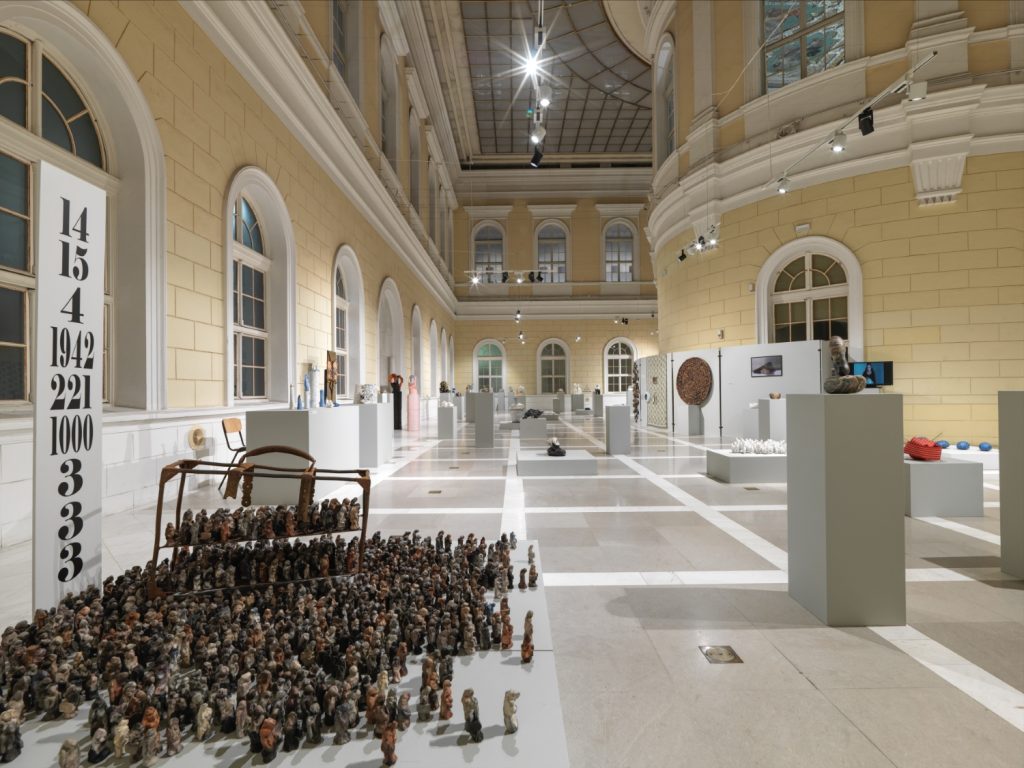
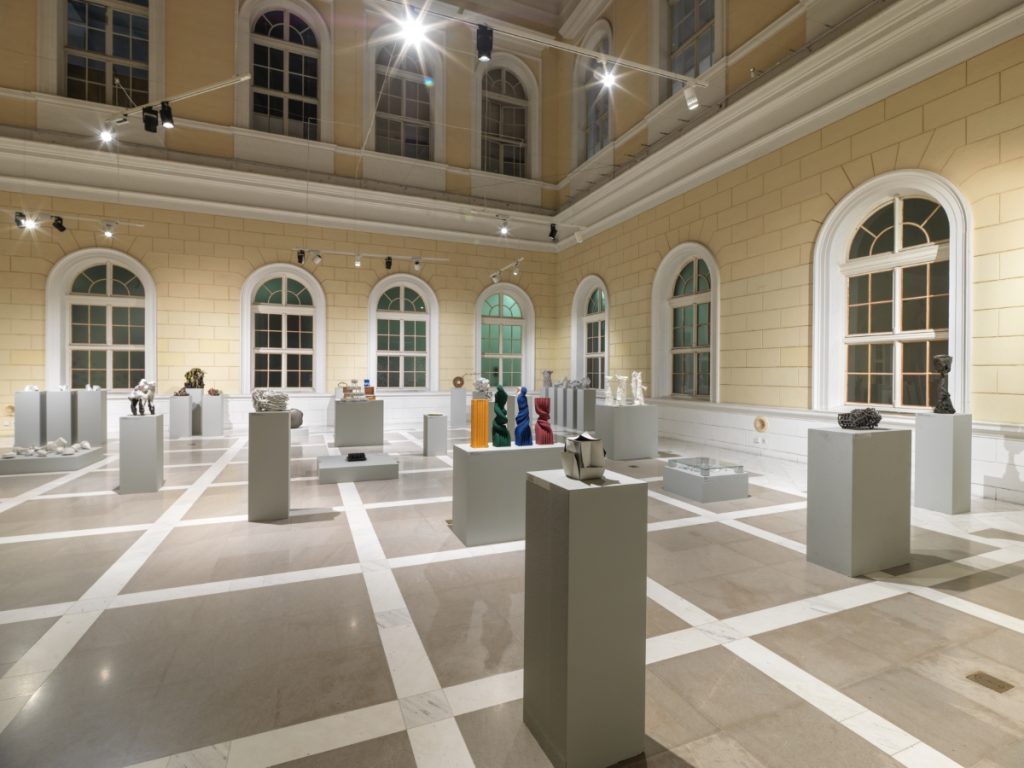
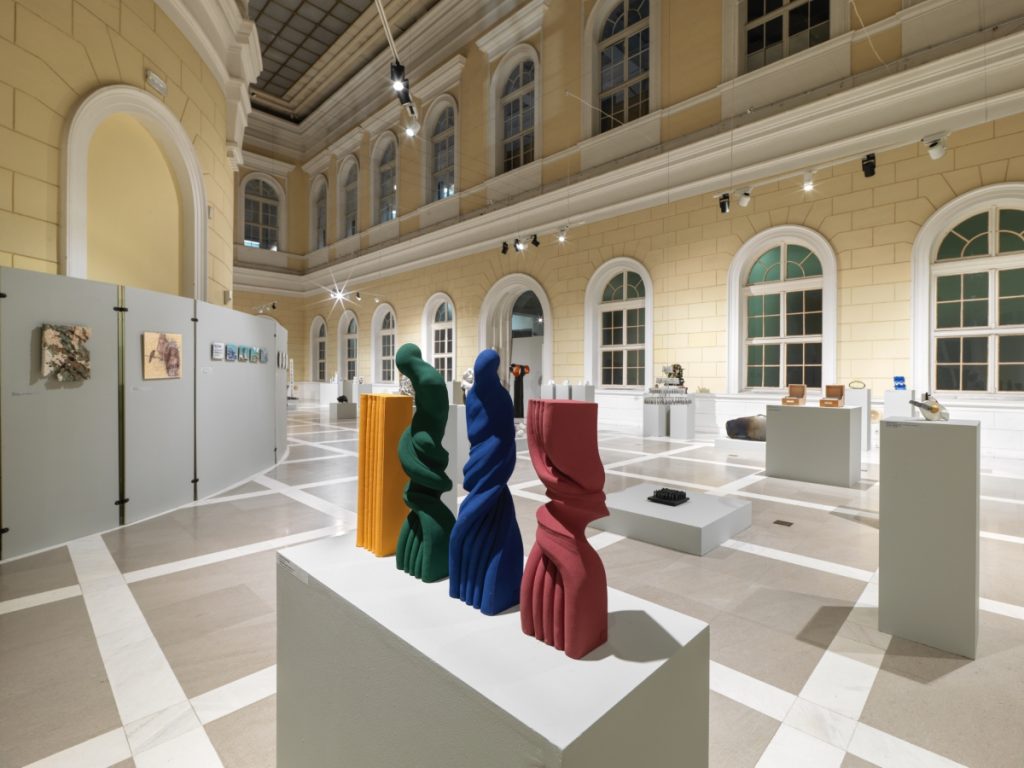
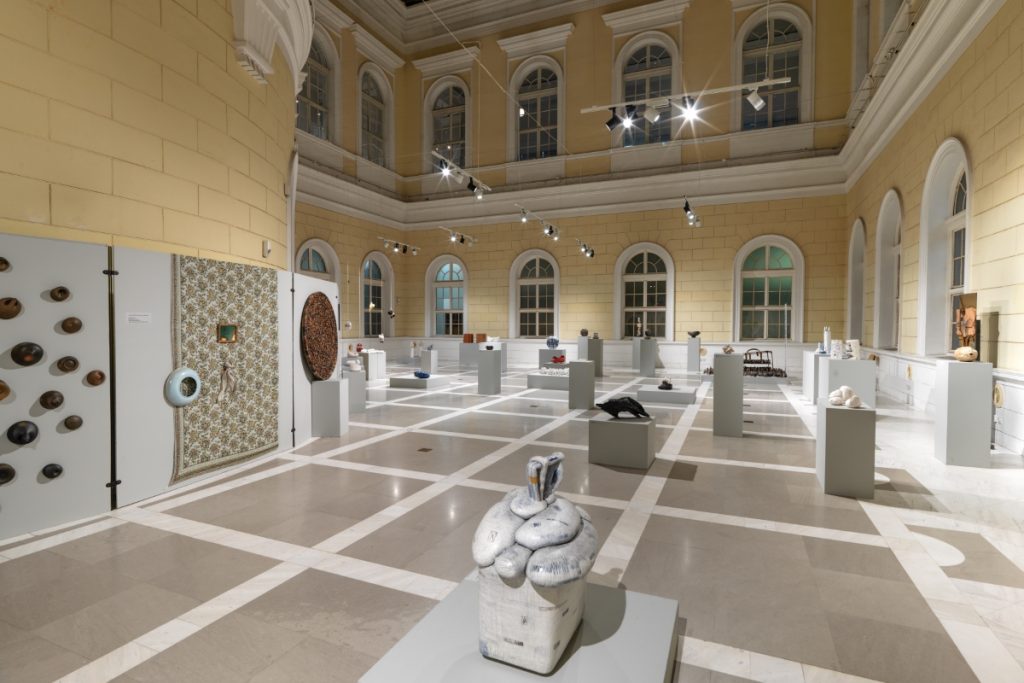
The international artists comprising the central exhibit were groomed and selected to contextualize the medium in the broadest possible forms of materialization. It comprised of Irena Biolchini, PhD (Italy), Višnja Slavica Gabout (Croatia), Alenka Gregorič (Slovenia), Karel Plemenitaš (Slovenia), and Lana Tikveša, PhD (Serbia), the jury combed through 319 entries to choose 64 works from 30 countries. The selected works topple many myths about the tradition and potential applications of the material, and the jury conferred its awards upon those bold souls who made quantum leaps in the techniques and guidelines that other ceramic artists can look to for inspiration.
The Grand PRIX UNICUM 2023 (ILIRIKA Acquisition) went to Dmitrij Buławka-Fankidejski (1988, Ukraine, living and working in Poland) for his work EXCERPT (2022). The jury explained its decision: “The artwork is able to position itself outside time, being contemporary in its ability to block the eternal. It has an inner vibration that comes from its combination of material and form.” There is no doubt that this work sets a new bar for artistic and aesthetic criteria, positioning the material as a meditative medium that eclipses the sense of touch. If it’s true that clay has a calming effect when we touch it, then the same must be said of this winning work, which resonates its vibrations through its cosmic surface.
Veljko Zejak (1980, Serbia, living and working in Slovenia) took home a UNICUM 2023 Award for his Ghost Cities (2022) work. Jury statement: “The artwork is able to grasp the feeling of being alien to something and somewhere while trying to interpret that distance through an act of creation. Ceramics comes as the perfect material to narrate such an experience thanks to its combination of soil exploitation and cultural mixture.” Veljko Zejak, whose piece Big Money took home UNICUM’s Grand Prix in 2015, explores the ground where sculpture, ceramics, and graphic design intersect. Thorough knowledge of technique is thus essential for this artist, as it becomes the primary means of expressing ideas and concepts.
An Honorary Award UNICUM 2023 went to Velimir Vukićević (1950, Serbia) for his piece The Heart Is a Lonely Hunter (2022). Jury statement: “The artwork is able to combine visual attraction and perfect technique while keeping the mystery connected to the act of making. Moreover, it suggests a visual tactility that is very different from its actual materiality.” Velimir Vukićević’s masterful interlacing of 2D and 3D space has been a mainstay in the region’s ceramic production for 40 years already. His life’s work, which has continually sought to craft new spatial illusions both within and beyond a given object, spurs international contemplation about the medium’s tradition in the context of technical etude and bending the material to his will, as he has again shown in this work, which portrays the intersection of small sculptural objects and ceramics.

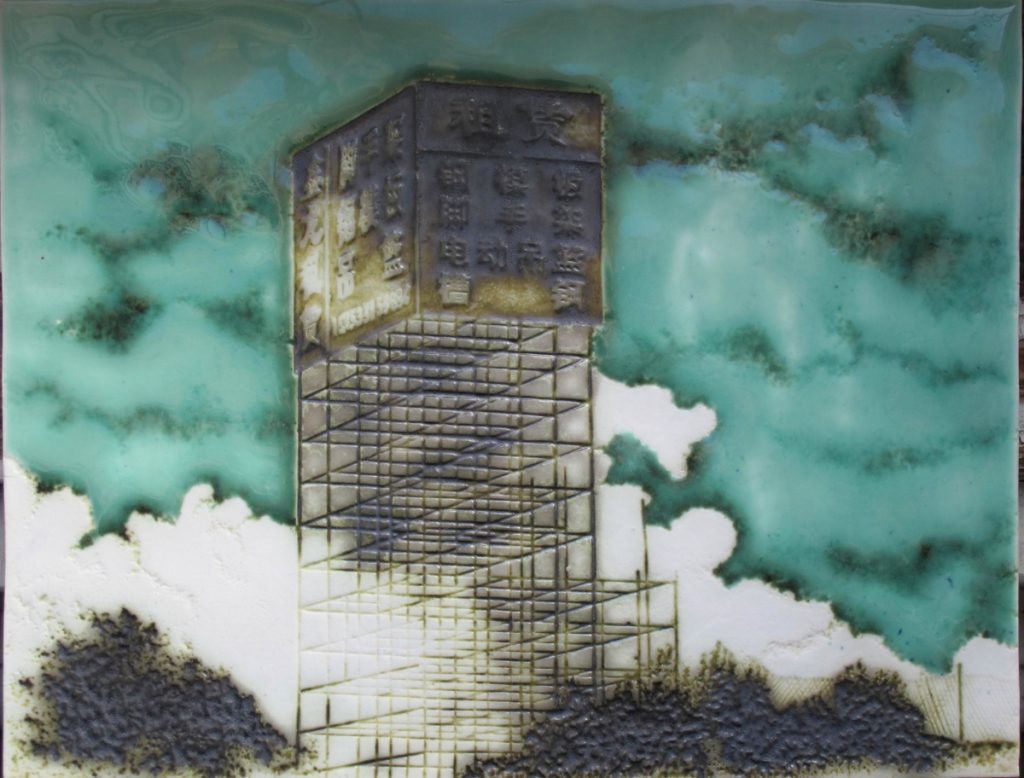





Catherine Sanke (1990, Germany) won the UNICUM 2023 Young Artist Award (under 35 years). Her piece In Night and Ice (2020) challenges the traditional practice of creating distance between viewer and object, as to really observe her work, you’ll need to rifle through a collection of well-archived little boxes. Jury statement: “The artwork shows a strong conceptual and poetic intention, combining idea and form in the shape of a private box of memories and silence.” Violating the rule of touch is an intriguing practice within this media, inviting a range of various interpretations through the immediate physical relationship that is either innately within us or is acquired through learning.
Małgorzata Maternik (1989, Poland) received a Recognition Award UNICUM 2023 for her work Home – Feelings, Place, Material (2021). The composition can be interpreted as a synthesis of materials, textures, structures, aromas, and warmth. Jury statement: “This artwork proves to be in the spirit of our time by combining different worlds of craft, i.e., textile and ceramic, suggesting a domestic landscape that merges with private and yet universal memories, such as home and childhood.”
Joanna Opalska-Brzecka (1981, Poland) also won a Recognition Award UNICUM 2023 for her work Forest Bag (2020). The artwork, which combines illustration with sculpture, shows a playful adoption of the sign and drawing. Thus, a narrative vessel is constructed, suggesting the idea of a bag traveling through time.
Another Recognition Award UNICUM 2023 was conferred upon Iva Brkić Walter (1987, Serbia) for her piece Sweet Nonsense (2022), which joins the popular trend of portraying objects with fetishist associations. Jury statement: “The artwork is able to present the utilitarian and domestic aspects of the ceramic material while suggesting a new reign of magic and dream.”
The Triennial’s central focus was supported by accompanying events staged by Tanja Lazetić, Alberto Gianfreda, Igor Ravbar, and the International Ceramics Student Exhibition at the Metelkova branch of the National Museum of Slovenia.
Tanja Lazetić played with the permanent collection at the National Museum, creating an intriguing insight into how we understand objects given their temporal and functional categorization, doing so to explore the roles and missions of museum institutions. Positioning places with their bottoms facing the viewer limits our perspective of the object’s interior, as it is only reflected from the protective glass case, and the exhibition is accentuated by the artist’s personal narrative as broadcast through cacophonous objects that slice into the heart of the museum’s sacrosanct quietude. Her work Table for Two highlights the practice of upending and rearranging permanent collections, a technique also used abroad due to the universality of ceramics as a tool to measure time, while the practice’s elasticity facilitates a fluid transition between different fields and themes.
Alberto Gianfreda understands the form of ceramics in a starkly unconventional way despite, perhaps with intentional irony, leaning heavily on its traditional and historical significance. The work, comprised of majolica shards, or faianza in Italian, makes a map of products and the locations of their origins. The mosaic composition of puzzle pieces vibrates in traditional murals. Destroying the old makes way to create new compositions and repurpose old material, while in combination with metal chains, it lends fluidity to the ceramic form, which is otherwise rigid.
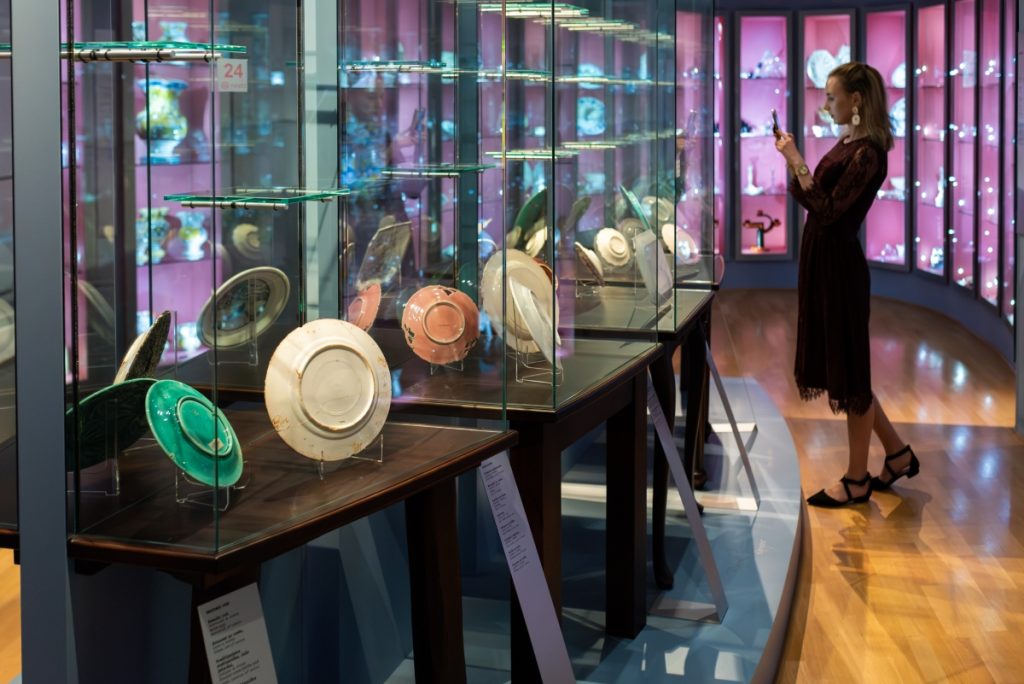
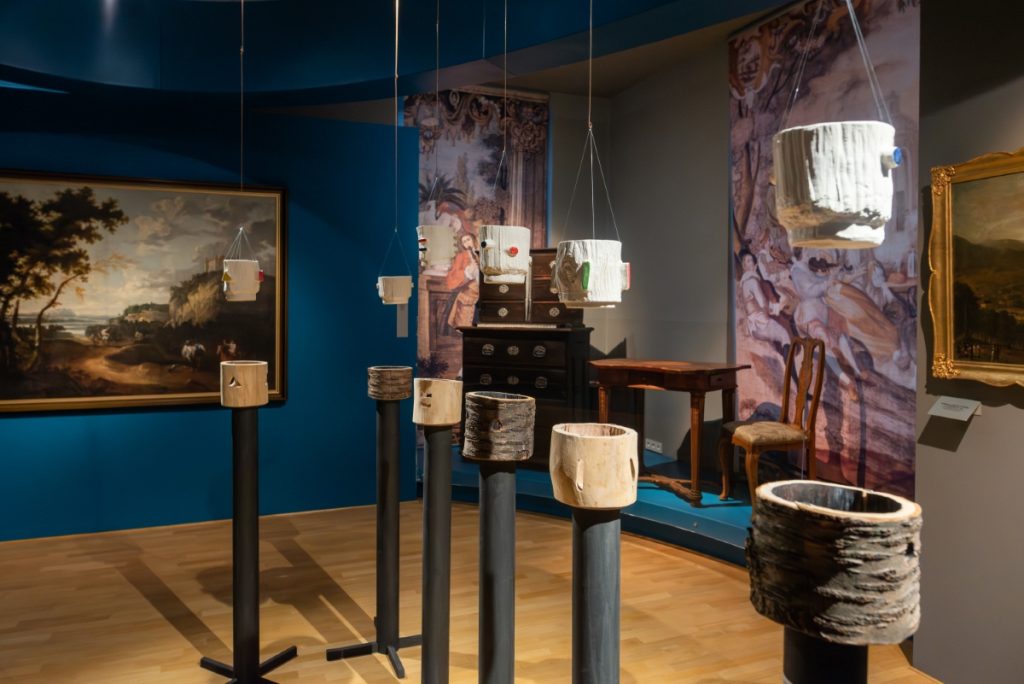
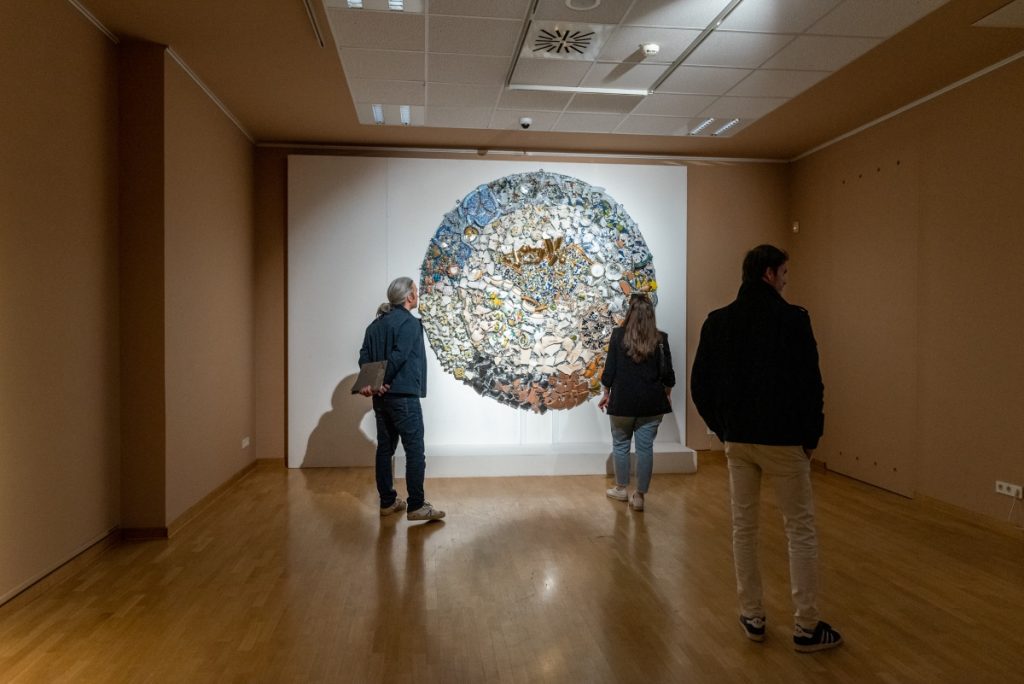
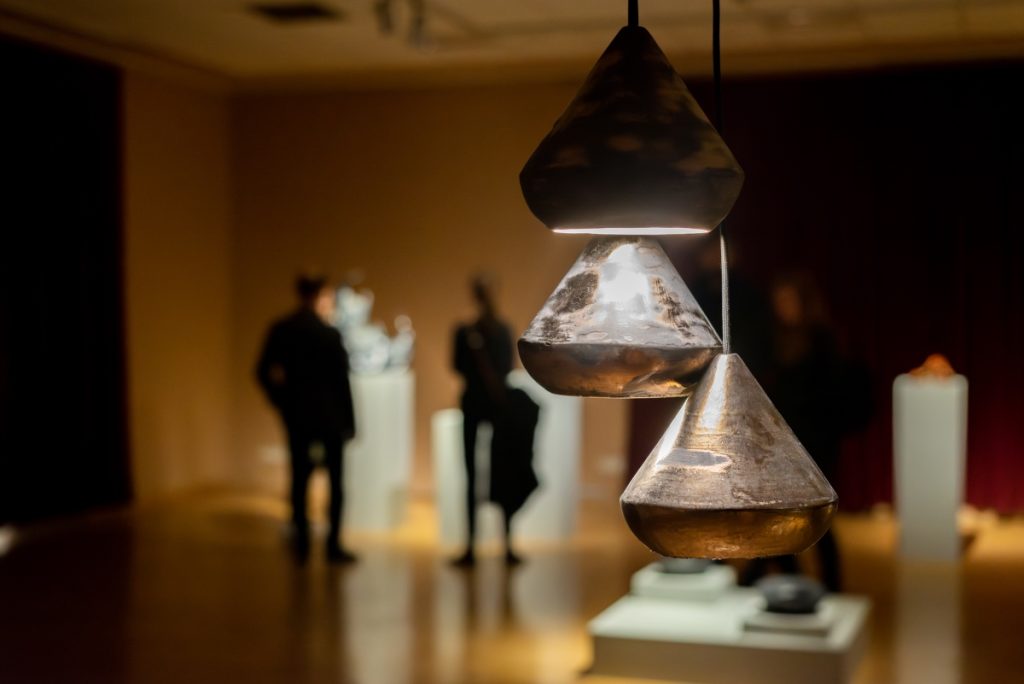
Igor Ravbar’s work Imprints unites two of the most primal materials and imposes conditions on their existence in terms of composition and execution. His porcelain objects, flying in the face of the traditional use of plaster molds, are cast into sculpted molds, whose role and form in the exhibition hybridly see them transition from sculptural to utilitarian object. The transparent porcelain casts are perhaps just an imprint of the negative relief in the wooden molds, as the wood’s texture and structure can be seen on their surface, a shadow of the principal object. Mateja Kos, Ph.D., undersigned the exhibit by saying, “Igor Ravbar’s exhibited works are distinguished above all by an extremely precise feeling for the material and the ability to accentuate the complementary properties of the two materials used, both wood and ceramic and thus for the originality of artistic creation with archetypal materials, which is certainly a significant contribution to modern artistic expression.”
The International Student Exhibition of Ceramics presented works from students of the University of Ljubljana’s Academy of Fine Arts and Design and Faculty of Education, the University of Maribor’s Faculty of Education, and Belgrade’s Faculty of Applied Arts at the University of Arts. Mentors prof. Lana Tikveša, PhD, prof. Mirko Bratuša, prof. Darko Golija, and assist. prof. Kristina Rutar highlights the selected authors in equal parts due to the prospective promise of their academic research and the technical mastery their works portrayed, along with their positioning within the categorization of contemporary ceramics. Freedom in exploring the medium leads to a wealth of experience for viewers, as we are treated to video performances, large-scale works, smaller objects that tease the overlaps of architecture, sculpture, design, and multimedia.
Kristina Rutar is an artist born in 1989 in Slovenia. She completed her studies in ceramics at the Faculty of Education, University in Ljubljana, in 2013. She continued her post-graduate studies in interdisciplinary printmaking at the E. Geppert ASP in Wroclaw, Poland. She mainly works in sculpting and ceramics, questioning the traditions of the two mediums. She received numerous awards and acknowledgments, and her works can be found in public and private collections. She lives in Ljubljana, Slovenia, where she works as an assistant professor of ceramics at the Academy of Fine Arts and Design.
Captions
Installation views courtesy of Narodni muzej Slovenije (National Museum of Slovenia).


















Top